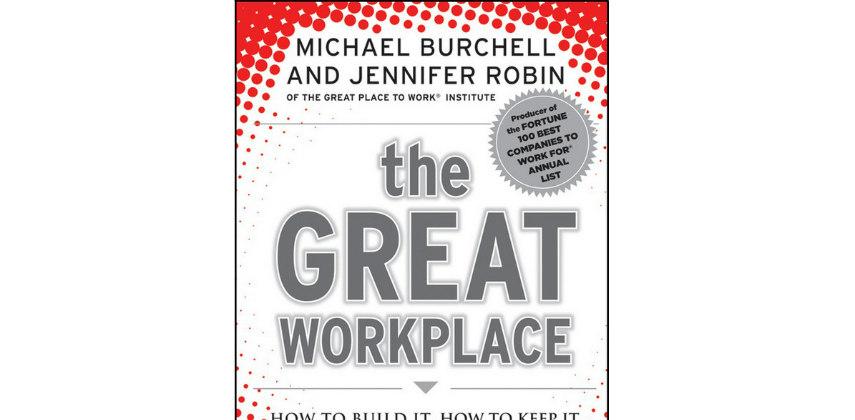If you're still in doubt, just ask any business school student or, better yet, read the opening chapters of Michael Burchell and Jennifer Robin's The Great Workplace: How to Build it, How to Keep it and Why it Matters.
The 222-page title makes a strong case for the "happy employees mean productive employees" approach and includes a host of statistical and empirical data to back it up.
Burchell and Robin are both members of the Great Place to Work Institute, a global corporation that since the early 1990s has advised some of the world's largest companies.
The institute is also highly regarded among academics, but is likely best known for its Fortune 100 Best Companies to Work For list, which it produces annually.
Using real-life examples, Burchell and Robin highlight workplace strategies that continue to help the 100 Best get more out of their staff - strategies that, for the most part, stem from attentively listening to their concerns.
The authors' suggestions are structured around a slightly modified version of the institute's Great Place to Work Model (shown above).
As noted, the elements of what makes a great workplace can be divided into five themes: credibility, respect, fairness, pride and camaraderie.
These also make up the five core chapters of the book which, rather than a being a simple collection of best practices, serves more as a management-guide with action-steps, checklists and case studies.
The chapter on credibility discusses how leaders need to demonstrate competency and help foster communication.
Two-way communication, the authors say, is "arguably the most important dimension of the Great Place to Work Model".
This is subject to the caveat that the communication is informative.
"The biggest mistake we see leaders make when addressing the area of informative communication is simply to communicate more often, without considering either the best vehicles or the type of information being communicated," they write.
"Leaders at all levels should attend to the meaningfulness of their communications, their quantity, and their format."
On the dimension of respect, Burchell and Robin advocate a culture of support, whereby leaders sustain their staff, personally and professionally.
Collaboration, the ability to participate in meaningful decisions and the perception of a genuine sense of caring, they say, are of equal importance.
As for fairness, the third dimension and last of the book's "Three Relationships", emphasis is placed on equal treatment, impartiality and the creation of a level playing field.
Benefits, work environment and work-life balance all fall under this category.
Beyond the Three Relationships, the authors also suggest creating a sense of pride among staff.
"When employees believe their efforts make a difference, they feel their work has an impact on the organisation, and that their personal presence in the workplace (independent of their job description) also makes a difference," they write.
Burchell and Robin conclude with a few directions on camaraderie.
Citing Starbucks as an example, they explain that organisations should "build a sense of family at work".
They further put forward the theory that "when employees feel a sense of camaraderie with their co-workers, they feel as energised by their work environment as they do by their non-work environment".


